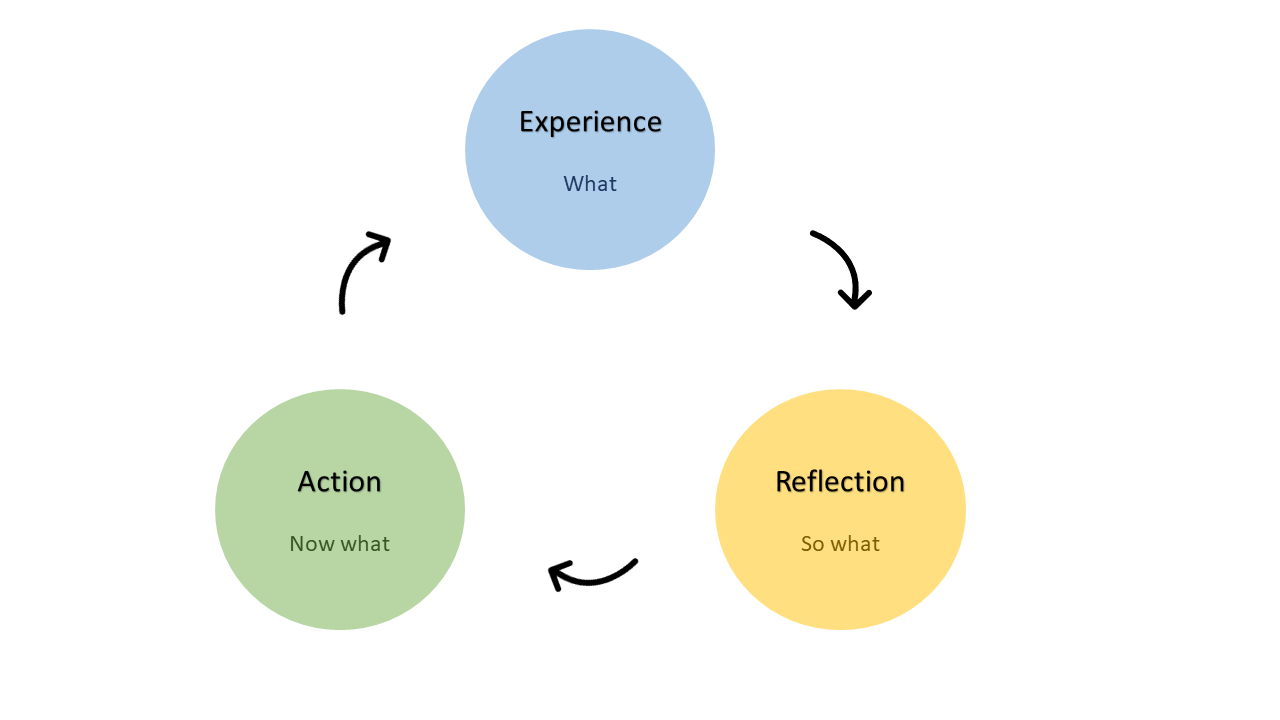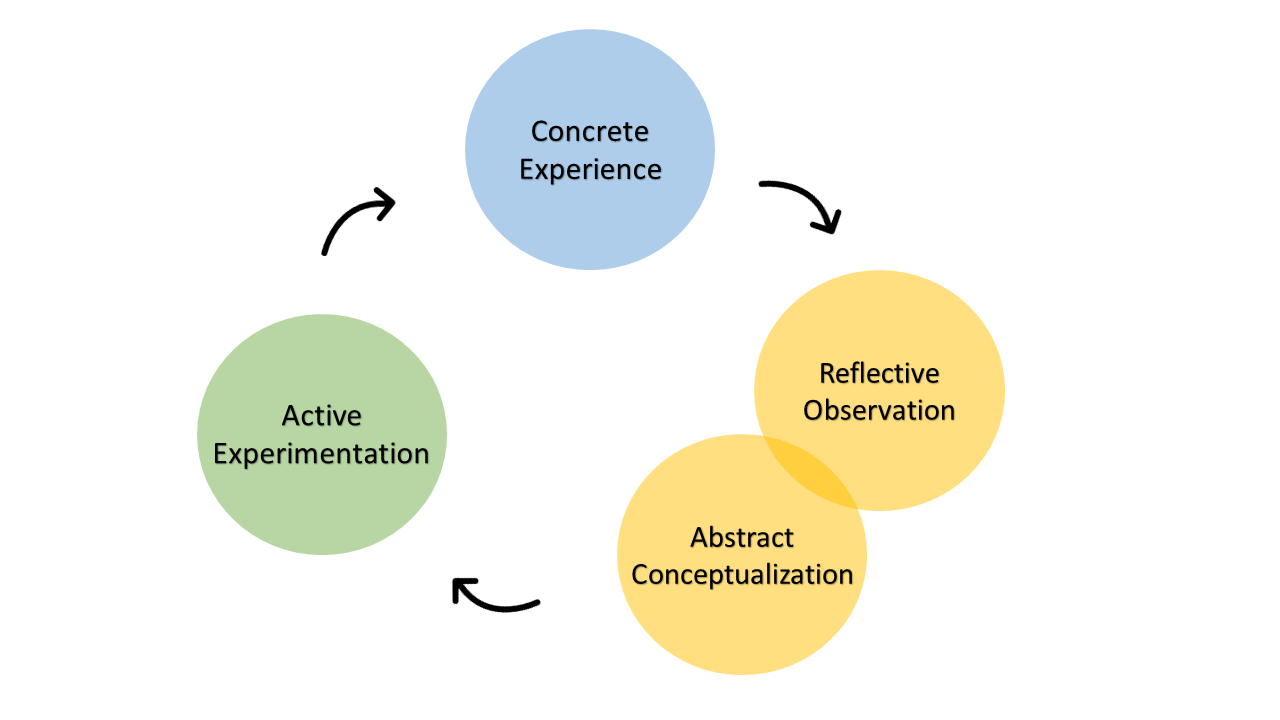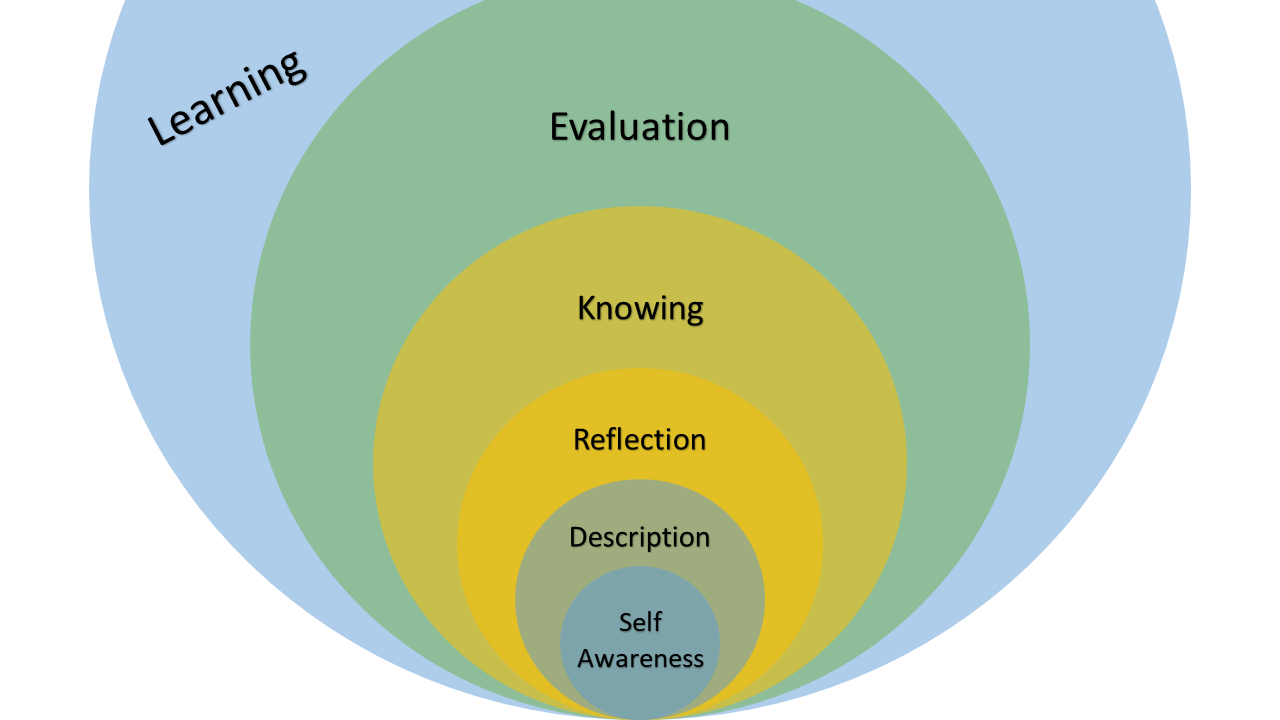Models and stages of reflection
Reflection is a skill that needs to be regularly trained. Especially since topics in the master’s program are more theoretical and technical than during your bachelors study, it’s natural to find information retention more difficult. Reminding ourselves of the different reflection methods outlined below can help us take a step back and appreciate which information we are digesting and where we should spend time getting a deeper understanding.
There are many common themes across the different reflection models, but each is slightly different – below are 3 of the most popular models in increasing complexity. Sometimes it’s more useful to do a simple reflection for a lecture or conference you just attended, or for a short brainstorming session. Other times, after completing a section of your thesis for example, you’ll find an in-depth reflection is more useful. Read over the following reflection techniques below and make note of the ones that best suit your learning style.
The simplest recognised reflection cycles14 are those of Driscoll15 (2007) and Jasper16 (2013)17. They break the reflection process down into three stages. Experience > Reflection > Action. Also known as “ERA”. Or in question form “What?” > “So What?” > “Now What?” (Fig. 1).

Fig. 1: Visualisation of the ERA cycle
To utilise these, we start with an experience. This can be a new learning outcome or one that you have covered before. The reflection may come after a success with the topic, or after you’ve recognised you’re struggling. Questions we may ask ourselves to document the experience include:
“What”
- What happened chronologically?
- What learning outcomes were set?
- What results, work, or learning outcomes did you find yourself with at the end of the experience?
Once we’ve identified the experience, we reflect on how it has occurred as a whole. Questions we may ask ourselves during reflection are:
“So what”
- What were you thinking during the process? How did you feel?
- Did you find the experience positive or negative? Would this have been different under other circumstances?
- Do you recognise your behaviour working with this experience? Is this typical for you?
- How would you gauge the outcome of this experience? Does it align with the goal you set for yourself?
The final element is determining which action should follow. What we do in response to an experience varies per person. The action we take will result in a new experience, perpetuating the cycle once more. Over time, we should be able to determine which actions will lead to positive experiences for ourselves in the future. Questions to ask during this stage are:
“Now what”
- Should I change my behaviour or the type of activity if I want to achieve the same learning goal next time?
- Do my learning goals require a different activity?
- What types of learning goals do I want to set for myself in the future?
A valid outcome of this exercise could be to keep things the same and as such it should be noted that sometimes the outcome of reflection is to take no action. As long as you are honest with yourself about these reflections there are no wrong answers.
One step further from the simple “ERA” cycle is Kolb’s experimental learning cycle14, 18 (Fig. 2). This model expands the ‘action’ step, prompting us to reflect and understand the experience through active experimentation.

Fig. 2: Visualisation of Kolb’s experimental learning cycle.
There are four key steps at play (Fig. 2):
- Concrete experience: Here we explain the experience we have chosen to reflect on. You could be the one creating the experience or be the once experiencing it yourself.
- Reflective observation: We reflect on said experience, using much of the same questions we asked ourselves for the “ERA” cycle. Specifically note down any discrepancies between the experience and your understanding of it.
- Abstract conceptualization: Here, we track what we have learned from the experience. There are two types of valid entries. (1) Any new ideas that have arisen from reflection or (2) any modifications to existing ideas.
- Active experimentation: Finally, we apply our abstractions to the real world. List future situations where we can apply our ‘action’ steps and once completed reflect on which areas this worked best in.
By using Kolb’s model, we strengthen the connection between the results of our experience and reflections and how we’ve learned from them.
The final and most complex reflection model we will discuss is Bass’s Holistic model. This model helps guide us through a deeper reflection on each stage.

Fig. 3: Visualisation of Bass’s holistic reflection model
There are six key steps (Fig. 3):
- Self-awareness: This model starts a step before “ERA” and asks you to identify the situation you want to reflect on as you are experiencing it – in the moment. Take note of your thoughts, responses, and emotions. As these reflections are cyclic, this will help bring lessons learned through reflection into your real-world experiences.
- Description: Here we provide a factual description of the experience. The fuller the description, the more the whole event is recalled and considered. Following stage one, we can indicate why this particular experience was important to reflect on and which aspects made it significant.
- Reflection: In this stage we explore in greater depth the motivators behind the activity, ourselves, and the other actors involved. Questions to ask yourself include – what were the underpinning values and assumptions behind the experience? And what personal influence did you and others have on the experience? What factors contributed to the outcome?
- Knowing: Consider what your current level of knowledge on the subject/experience is now post-experience. Identify which learning needs were met, and which could have been more supported. Did you expect too much from the experience, or was not enough expected of you?
- Evaluation: Taking a step back, we are to analyse what went well and what can be improved. Consider knowledge, attitude, skills. This step is included to identify how things can be done differently in the future/what can be done in the future to make the experience better.
- Learning: The final step is to take action to meet our personal learning needs. It is important to identify any changes in perspective that may have occurred since the experience, and how the outcome of this experience will influence the way you approach the next one. Here we state what learning was internalised, what future goals we want to set for ourselves, and a plan of action to achieve that.


